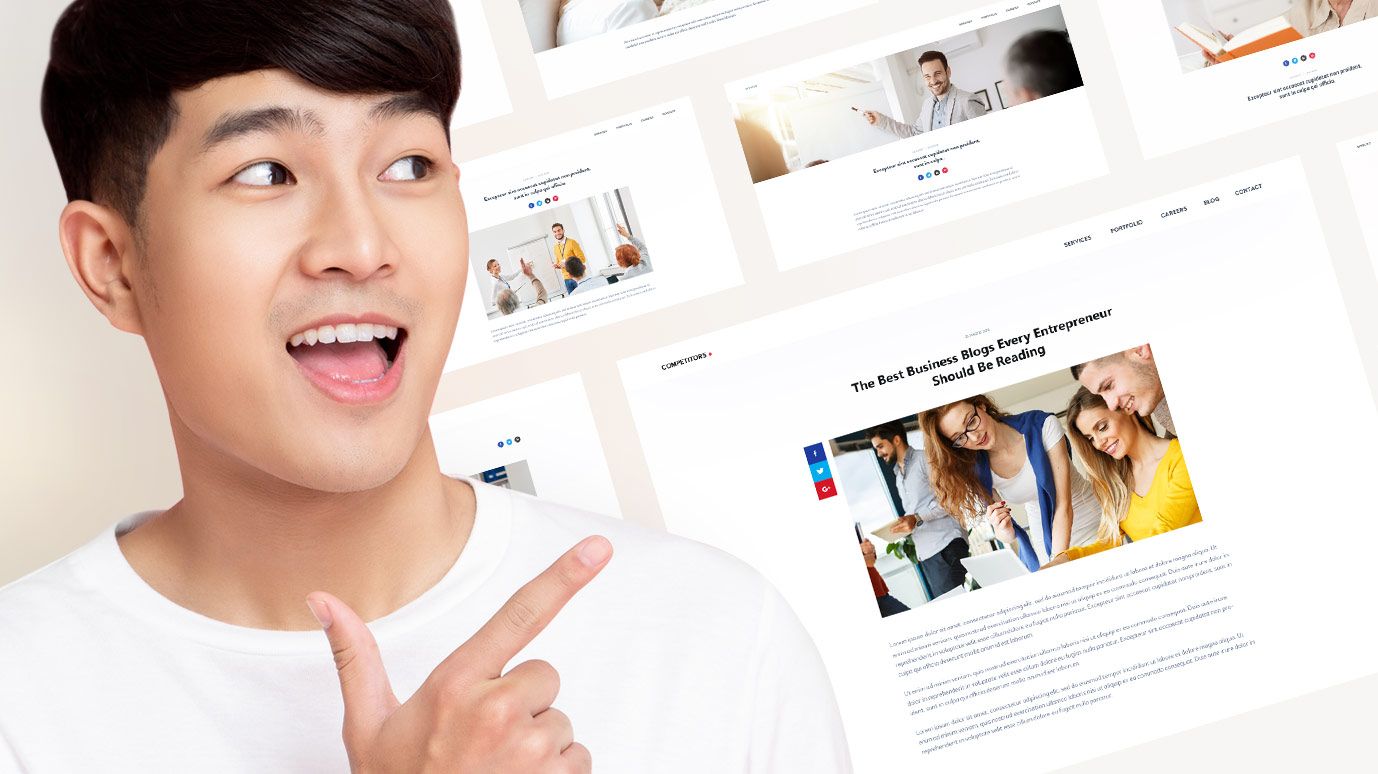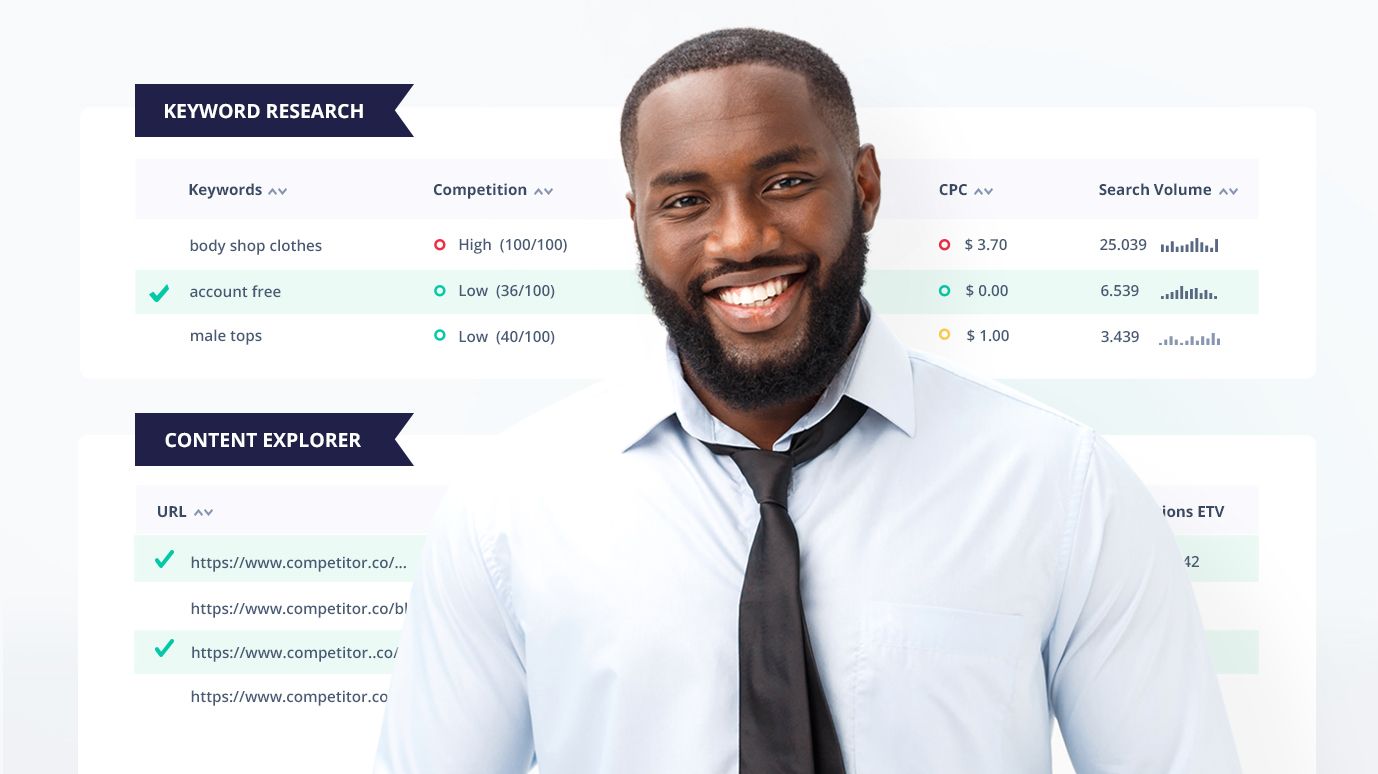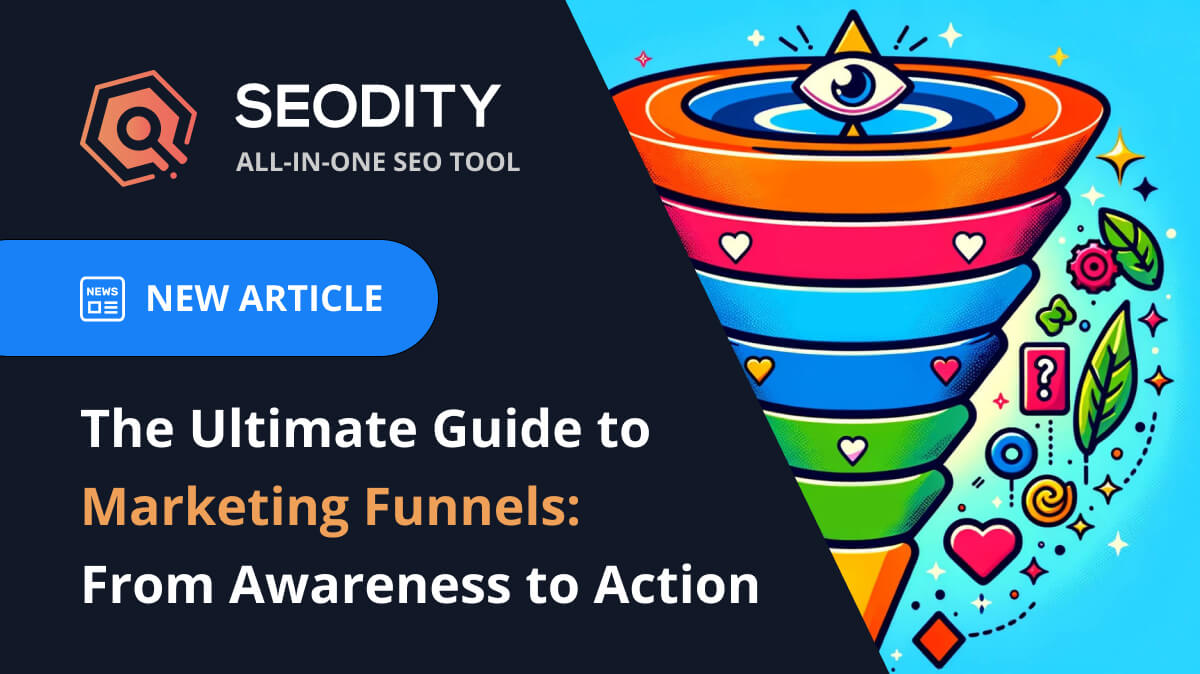
 23 min read
23 min readThe Ultimate Guide to Marketing Funnels: From Awareness to Action
Understanding the Marketing Funnel
Understanding the marketing funnel is crucial for businesses wanting to turn casual visitors into loyal customers. A marketing funnel is a step-by-step process that helps guide potential customers from first learning about a product or service to buying it. It involves strategies like AIDA (Awareness, Interest, Desire, Action) to help move people through these stages, even as some drop-off shapes the funnel. This guide will explain the different stages of the marketing funnel, how to create one, its importance, and how it can improve your marketing and solve problems. By reading it, you'll learn how to use the marketing funnel in your marketing strategy efficiently.
What is a Marketing Funnel?
The concept of a marketing funnel might seem daunting at first, but it's a fundamental strategy that mirrors the journey of a potential customer from their first encounter with your brand to the ultimate goal of a purchase. Imagine a funnel, wide at the top and narrow at the bottom. This shape represents the gradual reduction of potential customers at each stage of the buying process. At the top of the funnel (TOFU), brand awareness is created; as the funnel narrows towards the middle (MOFU), interest and consideration grow, leading to the narrowing at the bottom (BOFU), where the decision and action to purchase take place. The marketing funnel incorporates the AIDA model, which stands for Awareness, Interest, Desire, and Action, providing a structured approach that helps marketers plan and execute strategies to nurture leads toward conversion. By understanding and implementing a marketing funnel, businesses can pinpoint where to focus their efforts, enhance their marketing strategies, and effectively turn prospects into loyal customers.
The Stages of the Marketing Funnel
Delving deeper into the marketing funnel, it's essential to understand its distinct stages: Awareness, Interest, Desire, and Action (AIDA). This structure is not merely a sequence but a strategic framework marketers employ to tailor their efforts according to the customer's journey from discovery to purchase. Each stage of the funnel addresses specific customer needs and behaviors, highlighting the importance of tailored marketing strategies to effectively guide prospects through their buying journey.
- Awareness Stage: This initial phase is where potential customers first come into contact with your brand. It's about creating visibility and making your target audience aware of your existence. The focus here is on drawing in a broad audience through content that resonates with their interests or solves a problem they're facing.
- Interest Stage: Once brand awareness is established, the interest stage involves engaging your audience further, providing more in-depth information, and nurturing their curiosity about your offerings. The goal is to foster a relationship and build trust, demonstrating how your product or service can meet their needs.
- Desire Stage: In the desire stage, prospects evaluate your offerings alongside alternatives. It's about differentiating your product or service, fostering a positive emotional connection, and persuading them that you're the best choice. Content in this stage often focuses on benefits, testimonials, and case studies.
- Action Stage: The final leap towards conversion, the action stage, focuses on turning interest and desire into actual purchases. It involves making the buying process as frictionless as possible, providing compelling calls-to-action, and perhaps incentives to clinch the deal.
Understanding and leveraging the marketing funnel stages allows marketers to craft nuanced strategies at each phase, ensuring they address the right audience with the right message at the right time. Success hinges on recognizing that each stage requires a particular focus, from spreading awareness to sparking interest, igniting desire, and finally, driving action. This strategic approach can significantly enhance the effectiveness of your marketing efforts, leading to increased conversions and a loyal customer base.
Awareness Stage
The Awareness stage is the inception point of a potential customer's journey through the marketing funnel. It’s where initial curiosity is sparked and where your brand has the unique opportunity to make a memorable first impression. At this phase, the primary goal is to expand your reach and introduce your brand to as many people within your target audience as possible. The approach is more about casting a wide net rather than zeroing in on specifics, ensuring that your message resonates with a broad spectrum of potential customers.
Marketing strategies at this stage are designed to generate visibility and foster recognition. This can be achieved through a variety of tactics such as content marketing, SEO, social media campaigns, and paid advertisements. The content should be informative and engaging, aimed at addressing the initial questions or needs that might lead a prospective customer to discover your brand. For example, a blog post titled "10 Ways to Improve Your Digital Marketing Skills" targets individuals at the very top of the funnel by offering valuable insights while subtly introducing them to your expertise in digital marketing.
Success in the Awareness stage is measured not just by the volume of exposure but by the quality of the interactions that follow. It’s about laying a solid foundation for the stages that come next, moving potential customers from a state of awareness to interest with seamless precision. The strategies implemented here are the bedrock upon which trust is built, guiding prospects further down the funnel with a momentum that is both organic and highly intentional.
Understanding the nuances of the Awareness stage and executing it with finesse can significantly influence the effectiveness of the downstream efforts in the marketing funnel. It’s a crucial first step that requires careful planning, a deep understanding of your audience, and an unwavering focus on the value you can offer to those just beginning their journey towards making a purchase.
Interest Stage
Transitioning from the broad approach of the Awareness stage, the Interest stage represents a critical juncture in the marketing funnel where the initial curiosity cultivated in potential customers is nurtured into tangible engagement. At this phase, the objective shifts from merely casting a wide net to actively engaging the audience that has shown a spark of interest in your brand. It's about deepening the relationship by providing value that resonates on a more personal level, moving beyond generic awareness to foster genuine intrigue and connection.
The strategies employed during the Interest stage are more focused and tailored, aiming to captivate and educate the audience about the benefits and features of your offerings. Content created for this stage is insightful and informative, designed to address more specific interests and questions that prospects might have. This could take the form of detailed blog posts, educational videos, webinars, or engaging social media content that showcases your expertise and reinforces the value proposition of your products or services.
Email marketing also plays a pivotal role at this stage. By encouraging prospects to subscribe to your newsletter or download a valuable piece of content in exchange for their email address, you can foster a direct line of communication. This allows for a personalized engagement strategy, where you can nurture leads with targeted messaging and content that caters to their specific needs and interests, gradually guiding them towards the Desire stage.
Engagement metrics such as content interaction rates, time spent on the website, webinar sign-ups, and email open rates offer insights into how effectively the audience's interest is being captured and maintained. By monitoring these metrics closely, marketers can refine their strategies in real-time, ensuring that they are consistently engaging prospects in meaningful ways that build trust and move them further down the funnel.
Successfully navigating the Interest stage is instrumental in transforming awareness into genuine consideration. By engaging prospects with relevant, valuable content and fostering two-way communication, brands can build a solid foundation of trust and interest, setting the stage for the deeper evaluation and decision-making processes that characterize the next stages of the marketing funnel.
Desire Stage
In the journey through the marketing funnel, a pivotal transition unfolds as we enter the Desire stage. This phase is distinguished by a deeper engagement, where prospects have moved beyond mere interest in your brand to actively consider your product or service as a viable solution to their needs. It's a crucial moment where the seeds of interest planted in the earlier phases begin to blossom into genuine desire, setting the stage for the impending decision-making process.
At this juncture, the narrative shifts from general educational content to more persuasive communication showcasing your offerings' unique benefits and differentiators. Content strategies become intensely focused on demonstrating value, often incorporating testimonials, in-depth case studies, and success stories that highlight the transformative potential of your products or services. The goal is to create a compelling narrative that not only addresses the logical aspects of the buying decision but also taps into the emotional triggers that can tip the scales in your favor.
Additionally, this is the stage where engagement becomes even more personalized. For prospects who have indicated a strong interest, targeted emails or exclusive content can be used to deepen the connection further, providing detailed insights into how your solutions can meet their specific challenges. By emphasizing the customer-centric benefits and reinforcing the fit between their needs and your solutions, you can strengthen the emotional bond and pave the way for the final decision.
Moreover, as prospects deliberate their options during the Desire stage, it's critical to maintain an open line of communication, offering opportunities for dialogue through Q&A sessions, consultations, or live demos. This proactive engagement not only aids in clarifying any lingering doubts but also reinforces the sentiment that your brand is committed to its success, enhancing trust and fostering a sense of partnership.
Successfully navigating the Desire stage requires an adept blend of emotional and rational appeal, leveraging both content and engagement strategies to affirm the value proposition of your offerings. By intricately weaving together informative insights and emotive storytelling, you can effectively guide prospects toward a state of readiness for the decisive Action stage, where their interest transforms into commitment and, ultimately, into a tangible purchase.
Action Stage
The Action stage represents the culmination of a prospect's journey through the marketing funnel, where interest and desire converge into a decisive move toward purchase. Here, the meticulously crafted strategies across previous stages must effectively coalesce to facilitate the transition from potential customer to actual buyer. The primary focus of the Action stage is on conversion optimization, ensuring that all barriers to purchase are minimized and the process is as seamless as possible for the consumer.
At this point, compelling calls-to-action (CTAs) take center stage, urging the prospects to leap contemplation to acquisition. These CTAs should be clear, persuasive, and omnipresent across your digital touchpoints—whether on the website, within emails, or through social media platforms. Encouraging immediate action can also be promoted through time-sensitive offers, limited discounts, or exclusive deals, adding a layer of urgency that can often be the final nudge a prospect needs to commit.
Creating a frictionless buying experience is critical in this stage. This means having a straightforward checkout process, multiple payment options, and clear, accessible customer support. It's about removing any potential hurdles that might dissuade a prospect from completing their purchase. For instance, offering free shipping, easy return policies, and quick checkout options can significantly enhance the buying experience and increase the conversion rates.
Furthermore, transparency regarding product or service details, pricing, and delivery expectations builds trust and confidence in the purchase decision. Trust badges, secure payment symbols, and customer testimonials strategically placed near the point of sale can reassure the prospect that they are making the right decision.
Successfully navigating the Action stage is not merely about securing a transaction but about affirming the customer's decision, ensuring satisfaction, and laying the groundwork for a lasting relationship. Post-purchase follow-up, asking for feedback, and offering post-sale support are essential strategies to transition new customers into loyal advocates for your brand, fostering a cycle of engagement that extends far beyond the initial purchase.
Why the Marketing Funnel Matters
The marketing funnel is more than a conceptual framework outlining a customer's journey; it serves as a strategic guide critical for pinpointing where to allocate resources and efforts within your marketing strategy. At its essence, the funnel provides an organized way to understand and influence the customer's path from initial awareness to final purchase, encompassing all the nuanced interactions in between. This strategic importance stems from its ability to help businesses identify leaks or weak points in their engagement strategies, segments where potential customers might be lost due to lack of information, interest, or perceived value.
Understanding each stage of the funnel and the customer's mindset within these phases allows marketers to craft tailored communications, offers, and support mechanisms that significantly boost the chances of progressing leads toward conversion. Moreover, businesses can efficiently adjust their tactics by diagnosing problems within specific funnel stages, optimizing the customer journey to enhance overall marketing effectiveness. For instance, noticing a drop-off at the desire stage could indicate the need for more compelling testimonials or a clearer demonstration of product benefits to bolster trust and conviction among prospective buyers.
Furthermore, the marketing funnel matters because it aligns marketing efforts with business goals, ensuring that activities at each stage contribute to the overarching objective of converting leads into customers and customers into loyal advocates. By systematically addressing the customer's needs and eliminating barriers to purchase at each step, companies can improve conversion rates, maximize return on investment, and ultimately, build a stronger, more enduring brand relationship with their audience. In a landscape where customer attention is fragmented and competition is fierce, understanding and leveraging the marketing funnel is indispensable for achieving sustained marketing success.
How to Create a Marketing Funnel
Creating a marketing funnel is an iterative process that begins with a deep understanding of your customer's journey from initial awareness to the final decision to purchase. Unlike traditional product development, you can't exactly "create" a marketing funnel in isolation; it manifests from the synthesis of strategies, content, and experiences aimed at guiding potential customers through their decision-making process. However, there are definitive steps you can take to optimize this journey and ensure your marketing funnel is as effective as possible in converting leads into loyal customers.
The first step involves delineating the stages of your specific marketing funnel. While the basic structure of Awareness, Interest, Desire, and Action (AIDA) provides a universal framework, customizing this model to reflect the unique aspects of your business and customer base is essential. Consider the particular ways in which your potential customers discover your brand, what engages and interests them, how they come to desire your product or service, and what ultimately drives them to take action.
Upon clarifying the stages of your funnel, you must identify the appropriate marketing tactics for each stage. This means choosing the right mix of content marketing, SEO, social media, email marketing, and paid advertising that meets your audience where they are in their journey. For example, top-of-the-funnel (TOFU) strategies might include blog posts and social media campaigns designed to boost awareness, while bottom-of-the-funnel (BOFU) approaches could focus more on testimonials, detailed product information, discounts, and special offers to nudge potential customers towards making a purchase.
An essential part of creating a marketing funnel is analyzing and understanding your target audience's needs, preferences, and behavior at each stage of their journey. This understanding will guide your content creation, offer design, and overall engagement strategy, ensuring that each interaction is tailored to move the prospect further down the funnel.
Lastly, continuous measurement and optimization are key to maintaining an effective marketing funnel. Setting up metrics for each stage of the funnel helps track progress, identify "leaks" where prospects drop out, and pinpoint opportunities for improvement. Regularly analyzing these metrics allows for data-driven decision-making and strategy adjustments that enhance the overall effectiveness of your marketing funnel.
In conclusion, creating a marketing funnel involves more than just mapping out the customer journey; it requires the strategic alignment of marketing tactics, deep customer insights, and ongoing optimization based on performance data. By focusing on these elements, businesses can develop a more compelling and effective funnel that drives conversions and fosters long-term customer relationships.
Top of the Funnel: Awareness
Converting potential customers into brand loyalists begins at the Awareness stage, the 'Top of the Funnel' (TOFU). This initial phase is all about casting a wide net to reach as many people within your targeted demographic as possible. The key here is not to sell but to inform and educate, providing content that caters to the broad interests of your audience or addresses their problems, thereby initiating the first step of their journey towards your brand.
Strategies such as search engine optimization (SEO), content marketing, social media engagement, and paid advertising play pivotal roles to effectively capture the essence of Awareness. These tactics are employed to elevate your brand's visibility and ensure that your brand is front and center when potential customers seek information or solutions you provide. For instance, leveraging SEO by targeting specific keywords related to your industry can help your website appear in search results, making it easier for potential customers to find you during their initial research phase.
Moreover, engaging with your audience through various social media platforms can significantly enhance brand recognition. Whether it's through informative blog posts, insightful videos, or interactive social media content, the goal is to generate interest and curiosity about your brand. Paid advertisements, when strategically placed, can further extend your reach, introducing your brand to those who might not have discovered it organically.
Successfully navigating through the Awareness stage sets the foundation for subsequent funnel stages. By making a lasting impression during this phase, you create the opportunity for deeper engagement as potential customers progress through to the Interest, Desire, and ultimately, the Action stages. The art lies in striking the perfect balance between being informative and enticing—drawing prospects in without overwhelming them with sales pitches—a nuanced approach that paves the way for a meaningful and enduring relationship with your brand.
Middle of the Funnel: Interest
At the heart of a marketing funnel lies the Interest stage, a pivotal point where the broad awareness cultivated in the preceding phase begins to crystallize into a more defined and engaged curiosity. This middle segment of the funnel is where your potential customers start to see you not just as one of many options but as a relevant solution to their specific needs or challenges. The transition from a casual observer to an engaged prospect occurs here, making it a critical stage for deepening the bond between your brand and your audience.
The objective during the Interest stage is to elevate the relationship by delivering content and interactions that are both informative and tailored to the specific interests of your prospects. This might involve a series of targeted blog posts, specialized webinars, or dynamic social media campaigns that delve into more detail about how your products or services can solve their problems or enhance their lives. The key is to engage them with content that resonates, prompting them to envision how your offerings align with their desires.
Moreover, this stage serves as an opportunity to start building a more personalized connection. Encouraging prospects to sign up for your newsletter, participate in a survey, or follow you on social media allows you to collect valuable insights about their preferences and needs. This data can be instrumental in crafting targeted communications that speak directly to them, further nurturing their interest and guiding them gently towards the next stage of the funnel.
Measuring engagement during the Interest stage is crucial. Metrics such as page views, time spent on site, content download rates, and social media interaction can offer insights into how effectively you are capturing and holding your audience's attention. This stage is about ensuring that your marketing efforts resonate at a deeper level, fostering a sense of connection and trust that sets the foundation for the upcoming Desire stage, where preferences are formed and decisions are influenced.
Successfully engaging prospects during the Interest stage is a delicate balance of providing value, demonstrating expertise, and gradually building a relationship. It's about moving beyond mere awareness to create a sense of belonging and affinity with your brand, ensuring that as prospects transition deeper into the funnel, they do so with a growing conviction about the alignment between their needs and your solutions.
Bottom of the Funnel: Desire and Action
As we navigate toward the culmination of the marketing funnel, we reach the critical stages of Desire and Action, collectively forming the 'Bottom of the Funnel' (BOFU). Here, the groundwork laid in previous stages converges to culminate in the decisive steps of purchasing and customer commitment. This phase is where the potential customer's journey transforms into tangible outcomes, making it imperative for brands to fine-tune their strategies, ensuring they are precisely aligned with the needs and expectations of prospects ready to commit.
At the Desire stage, marketing efforts are intensified to nurture the prospect's burgeoning interest into a concrete desire for the product or service. It is at this juncture that the effectiveness of previous stages is put to the test. The prospective customer must see clear differentiation and value in your offerings compared to competitors. The content strategy during this phase may include detailed product comparisons, customer testimonials, and compelling case studies that underscore the unique advantages and outcomes your product or service delivers. The aim is to solidify the emotional and rational bases of the customer's decision-making process, making your option the obvious choice.
Moving into the Action stage, the focus shifts to removing any and all barriers to purchase. This stage is characterized by a streamlined and optimized conversion process that facilitates a smooth transition from decision to action. The implementation of clear, compelling calls-to-action, simplified checkout processes, and reassurances regarding security and privacy are crucial. Special offers, limited-time discounts, or exclusive bundles can provide the last push needed to tip the scales from consideration to purchase.
Moreover, it is essential to recognize that the BOFU does not signify the end of the customer journey but the beginning of a potential long-term relationship. Post-purchase engagement strategies such as follow-up emails, customer satisfaction surveys, and loyalty programs play a significant role in converting new customers into brand advocates. By ensuring customer satisfaction and opening the channels for ongoing engagement, businesses can foster a loyal customer base that not only repurchases but also acts as ambassadors to new potential customers.
In essence, the Bottom of the Funnel is where all your marketing endeavors crescendo into conversion and beyond, underscoring the need for a coherent, customer-focused approach that seamlessly bridges desire with action, thereby fostering a cycle of loyalty and advocacy that drives sustained business growth.
Marketing Funnel Metrics
Tracking progress through your marketing funnel is critical for assessing performance and identifying areas for improvement. By establishing key metrics for each stage, businesses can gain insights into the effectiveness of their marketing strategies and make informed decisions to enhance their funnel's performance. Marketing funnel metrics serve as a navigational compass, guiding marketers in optimizing each phase of the customer journey, from initial awareness to the final action of purchase and beyond.
At the top of the funnel, metrics such as website traffic volume, social media engagement rates, and content reach provide valuable data on awareness and interest generation. As prospects move to the middle of the funnel, indicators like email open rates, click-through rates, and webinar attendance help gauge the depth of engagement and interest. Further down at the desired stage, metrics such as product comparison views, time spent on product pages, and interaction with customer testimonials shed light on the efficiency of content in nurturing a purchase intent.
Ultimately, at the bottom of the funnel, conversion rates, average order values, and post-purchase feedback become critical metrics that quantify the success of the action stage, highlighting how well the marketing funnel has translated into tangible results. By continuously monitoring these metrics, companies can pinpoint where prospects drop off, identify what attracts and retains customer interest, and adjust their strategies to effectively improve the funnel's efficiency.
It should be noted that while these metrics offer insights, the true power lies in the holistic analysis of data across stages, understanding the interdependencies, and optimizing the customer journey as a cohesive unit. Regularly reviewing funnel performance against these metrics allows for agile adjustments to marketing tactics, ensuring the funnel remains aligned with changing consumer behaviors and market dynamics. Thus, establishing a robust system for measuring marketing funnel metrics is vital for continually refining and enhancing the funnel to better serve both the business's goals and the needs of its customers.
FAQ About Marketing Funnels
1. What is an example of a Marketing Funnel?
An exemplary marketing funnel begins with a digital campaign designed to attract attention to a new, innovative fitness app. At the Awareness stage, the company launches targeted social media ads and SEO-optimized content focusing on the benefits of staying active and how technology can aid fitness goals, reaching a broad audience interested in health and wellness. As potential customers engage, moving into the Interest stage, the company offers a series of engaging blog posts and emails that delve deeper into fitness tips, user testimonials, and the features of the app, nurturing the initial curiosity into a genuine interest.
With curiosity peaked, the Desire stage is marked by sending personalized offers for a free trial subscription via email, accompanied by compelling case studies showcasing the app's impact on users' fitness journeys, thus creating a strong inclination towards the product. Finally, in the Action stage, prospective users are prompted with a time-sensitive discount on their full subscription. Clear, compelling CTAs across the website and in emails streamline the subscription process, minimizing barriers to conversion. This focused, customer-centric approach not only moves potential users through the funnel effectively but establishes a foundation for ongoing engagement and loyalty, epitomizing the strategic orchestration of marketing efforts to transform interest into action.
2. What are the 5 stages of the marketing funnel?
Mastering the intricacies of the marketing funnel is paramount for businesses aiming to convert passing interest into enduring loyalty. The funnel encapsulates a customer's journey, starting with the initial awareness and culminating in the pivotal action phase, typically segmented into five core stages: Awareness, Interest, Desire, Action, and Retention. Awareness is where potential customers first encounter your brand, necessitating broad-reaching strategies to foster recognition. The Interest stage deepens this budding curiosity, engaging prospects with more focused content that showcases the value and relevance of your offerings. Moving into the Desire stage, customers evaluate your products or services against their needs, requiring persuasive narratives highlighting unique benefits. The Action stage focuses on conversion, emphasizing a frictionless path to purchase.
Finally, the often overlooked but crucial Retention stage seeks to transform new customers into loyal advocates through continued engagement, support, and value delivery. By understanding and adeptly navigating these stages, marketers can craft tailored strategies that guide prospects on a fluid journey from initial awareness to loyal advocacy, ensuring each touchpoint resonates and drives engagement forward. This strategic approach not only intensifies the effectiveness of marketing efforts but also solidifies a loyal customer base, pivotal for sustained growth and success in today’s competitive landscape.
3. What is the Difference Between a Sales Funnel and a Marketing Funnel?
The difference between a Sales Funnel and a Marketing Funnel lies at the heart of a business's strategy to convert prospects into loyal customers. A Marketing Funnel represents the journey a potential customer undergoes, from becoming aware of a brand to considering its products or services. This funnel is broader, focusing on attracting and nurturing leads with a mix of content and engagement strategies across stages like Awareness, Interest, Desire, and Action (AIDA). It's about casting a wide net to educate, engage, and gently guide prospects towards a purchasing decision.
On the other hand, a Sales Funnel is narrower and more focused, primarily concerned with converting leads, which have been warmed up by marketing efforts, into customers. It involves more direct and persuasive tactics, such as personalized sales pitches, demonstrations, and handling objections to closing the sale.
The Sales Funnel continues where the Marketing Funnel leaves off, taking over at the point of expressed interest or desire, pushing towards the Action stage to secure a transaction. Understanding these differences is crucial for businesses to align their marketing and sales efforts effectively. While the Marketing Funnel lays the foundation by building awareness and nurturing interest, the Sales Funnel capitalizes on this groundwork to drive conversions. Navigating the transition between these two funnels effectively can significantly enhance a company's ability to attract and retain customers, making it a fundamental concept for marketers and sales professionals alike. Businesses can optimize their customer journey by giving clear roles and defining the handoff points between marketing and sales, leading to higher conversions and customer satisfaction. Considering the synergy between these two funnels is key to developing a comprehensive approach that leverages the strengths of each to foster sustained business growth and customer loyalty.
4. What is a Purchase Funnel?
It is an essential concept in marketing and sales strategies, serving as a model to illustrate the journey a potential customer takes from first becoming aware of a product or service to the final action of making a purchase. Broadly similar to a marketing funnel, the Purchase Funnel focuses specifically on the buying process, detailing the progression of consumer behavior through stages such as awareness, interest, desire, and action. These stages reflect a prospective buyer's increasing engagement and commitment, starting with a wide pool of potential customers (awareness) and narrowing down to those who take the decisive step to buy (action). By understanding and effectively managing the Purchase Funnel, businesses can pinpoint areas for optimization, from increasing brand visibility to enhancing the buying experience, thereby boosting conversion rates.
5. What is Customer Retention?
It is the strategic pursuit by a business to keep its clients continuously engaged and satisfied, turning one-time buyers into loyal, recurring customers. It transcends the simple purchase action, fostering a deep, meaningful relationship between a brand and its clientele.
Through personalized communication, exceptional customer service, and a consistent delivery of value, companies work to create a positive customer experience that encourages repeat business. The essence of customer retention lies in the understanding that a loyal customer base is beneficial and essential for sustainable growth and competitive advantage. It involves analyzing customer feedback, adjusting services or products accordingly, and staying ahead of customer needs to meet and exceed expectations.
The significance of retaining customers cannot be overstressed, as it is often more cost-effective to keep an existing customer than to acquire a new one, and loyal customers frequently act as brand ambassadors, bringing in new customers through word-of-mouth. In sum, customer retention is about building lasting relationships that contribute to a cycle of continuous business and customer satisfaction, laying the groundwork for a thriving and resilient brand.

Marcin is co-founder of Seodity
.svg)
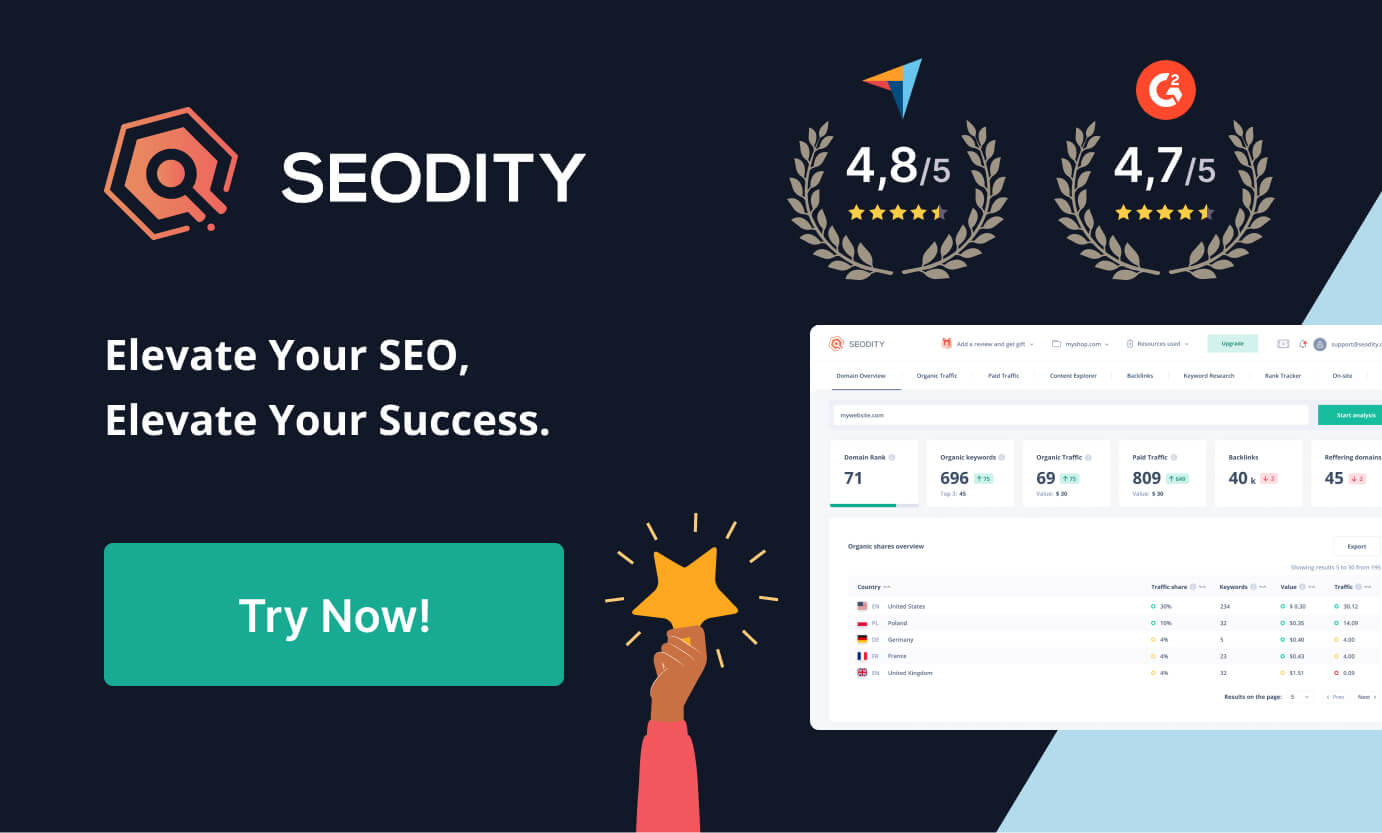
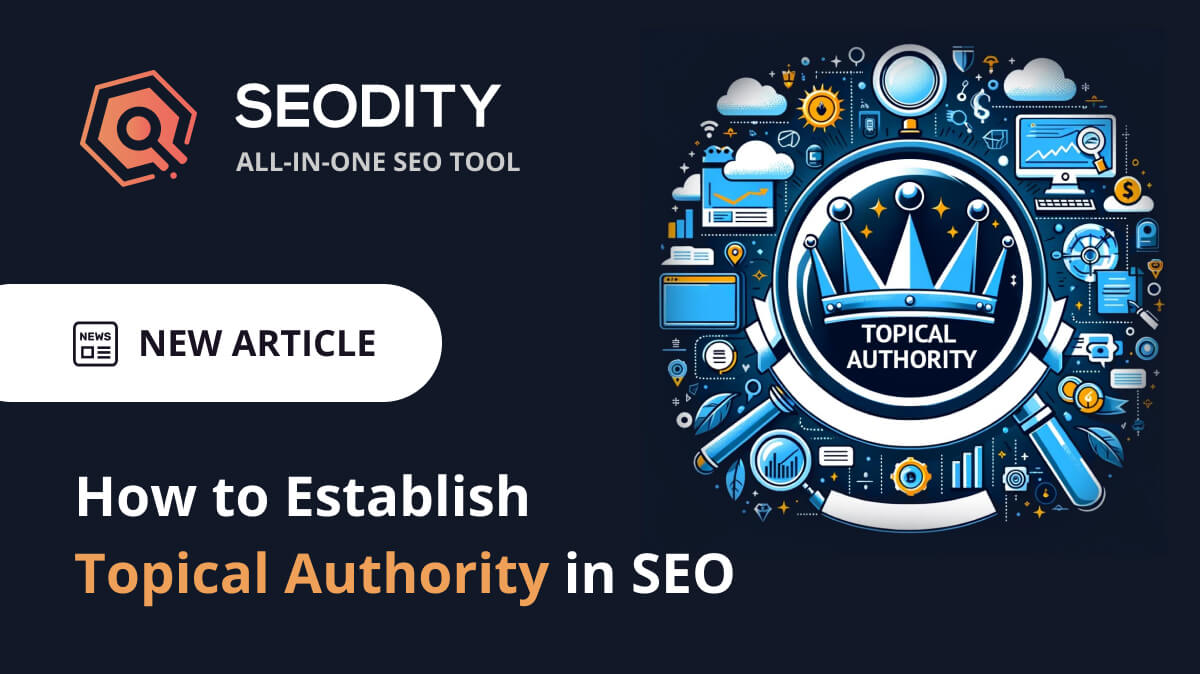
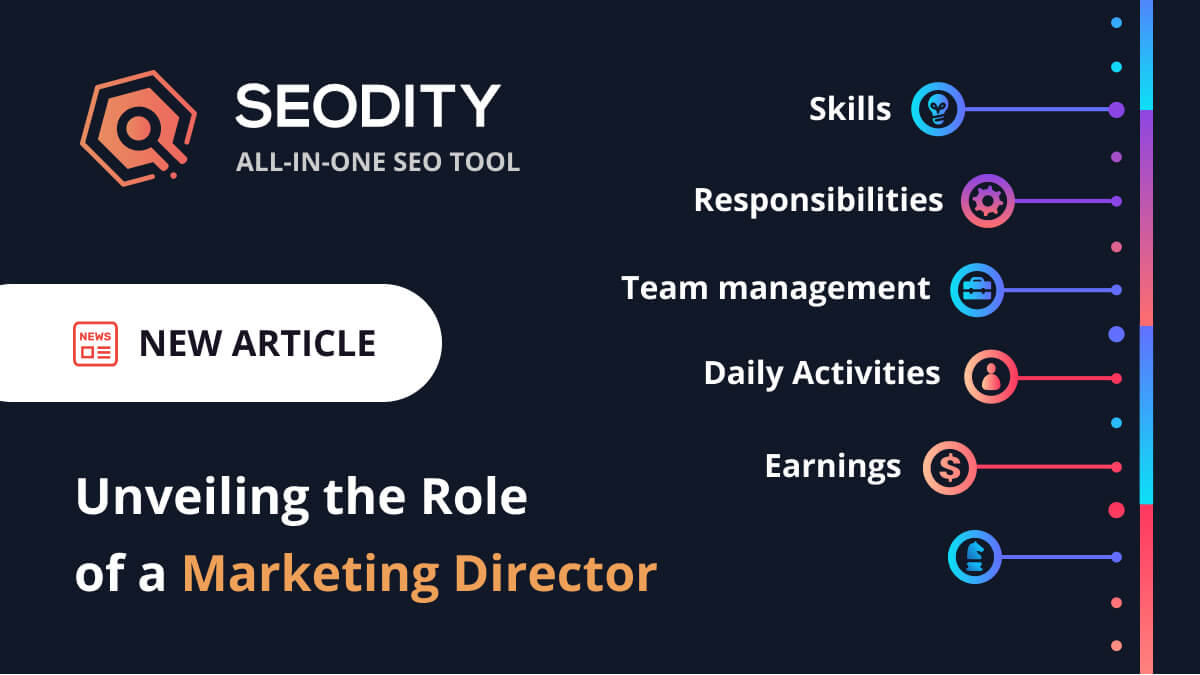
![What Is Content Marketing In Simple Words? [Examples & Tips]](https://storage.googleapis.com/seodity/public/blog/images/9091cf01d817431085a1f42498bab910.jpg)
